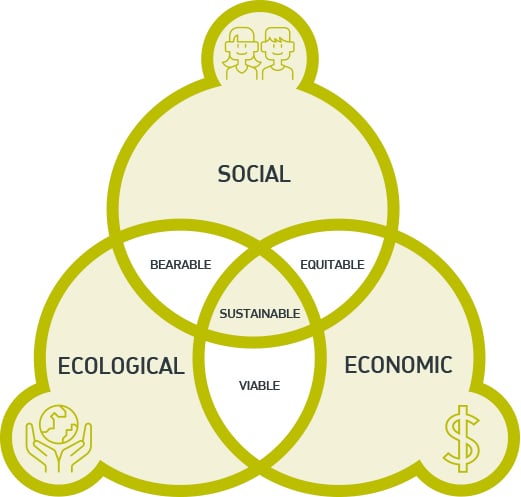It’s no big secret that one of the greatest problems facing the world in the 21st century is stemming the decline in the environment. Everyone can – and indeed should – do their part to ensure that future generations need not contend with climate change and a collapsing ecosystem.
But while most of us make a difference through better awareness of our energy and water usage, for example, designers in the built environment have more specific challenges when it comes to sustainability. The work that is done now by interior designers, architects and urban designers can have a host of positive effects in the decades to come, so long as the decision-making professionals have these considerations at the front of their minds.
Hames Sharley’s National Sustainability Forum is a group of passionate, multi-disciplinary professionals tasked with improving sustainability outcomes, and gathering, creating and sharing knowledge throughout each of the practice’s six national studios, keeping awareness of the issues at the top of the agenda.
While the Forum itself is a relatively new creation, sustainability has been embedded as one of Hames Sharley’s core values for several years:
We will take responsibility and accountability for the delivery of exceptional sustainable outcomes (environmental, social and economic) in the built environment and articulate these in terms of their actual value.
And it’s worth looking at this mandate a little more closely, for the light it throws upon the word ‘sustainability’. In recent years, it has evolved into a byword for ecological conservationism, and while that’s undeniably important, it is only one of three factors that contribute towards a design project being truly sustainable. Hames Sharley’s value statement spells it out specifically with the phrase “environmental, social and economic”. Together these are better known as the Three Pillars of Sustainability, and for a project to be properly sustainable, all three must be not only present, but also robust.
- Ecological
Exactly as you would expect, this one deals with the effects our actions have on the natural world, from carbon footprints to air quality to responsible use of natural resources. For the majority of people, this is the embodiment of sustainability; in architecture and design, it includes considerations such as passive heating and cooling, and better use of natural resources such as greywater recycling. Ideally a building should enhance the environment and have positive impact on it.
- Social
This pillar addresses how we interact with each other as human beings. Are new additions to the built environment raising our quality of life in terms of inclusivity? Do they embrace diverse cultures, traditions and lifestyles? Do they sit within the existing streetscape naturally and comfortably, and do they have access to the infrastructure we look upon as essential for a pleasant life?
- Economic
Put simply, this is about efficiency and cost-effectiveness, although there is certainly crossover with other sustainability concerns. This pillar is also about improving or creating sustainable economic framework for the life of developments. For example, better value can be derived from a project by reusing materials and structures rather than demolishing and starting again with new resources. Not only can this occasionally save money, it also has an environmental effect in terms of carbon footprint and wastage.
This last suggests that while they are often referred to as the Three Pillars, the considerations are better viewed as a Venn diagram. They all intersect and work together, with a sweet spot where the entire trio are working in harmony. It’s at that point that sustainability for architects and designers has its ultimate expression.

So, if environmental considerations tend to attract the highest degree of attention when we think of sustainability, that’s understandable. But in the design community, the vision extends some considerable way beyond this – everyone may be expected to do their part to make the future a better place, but some are better positioned than others to make a difference.






